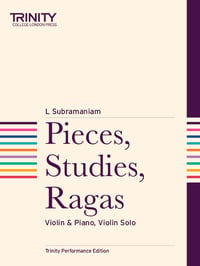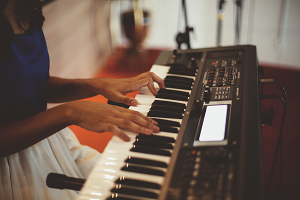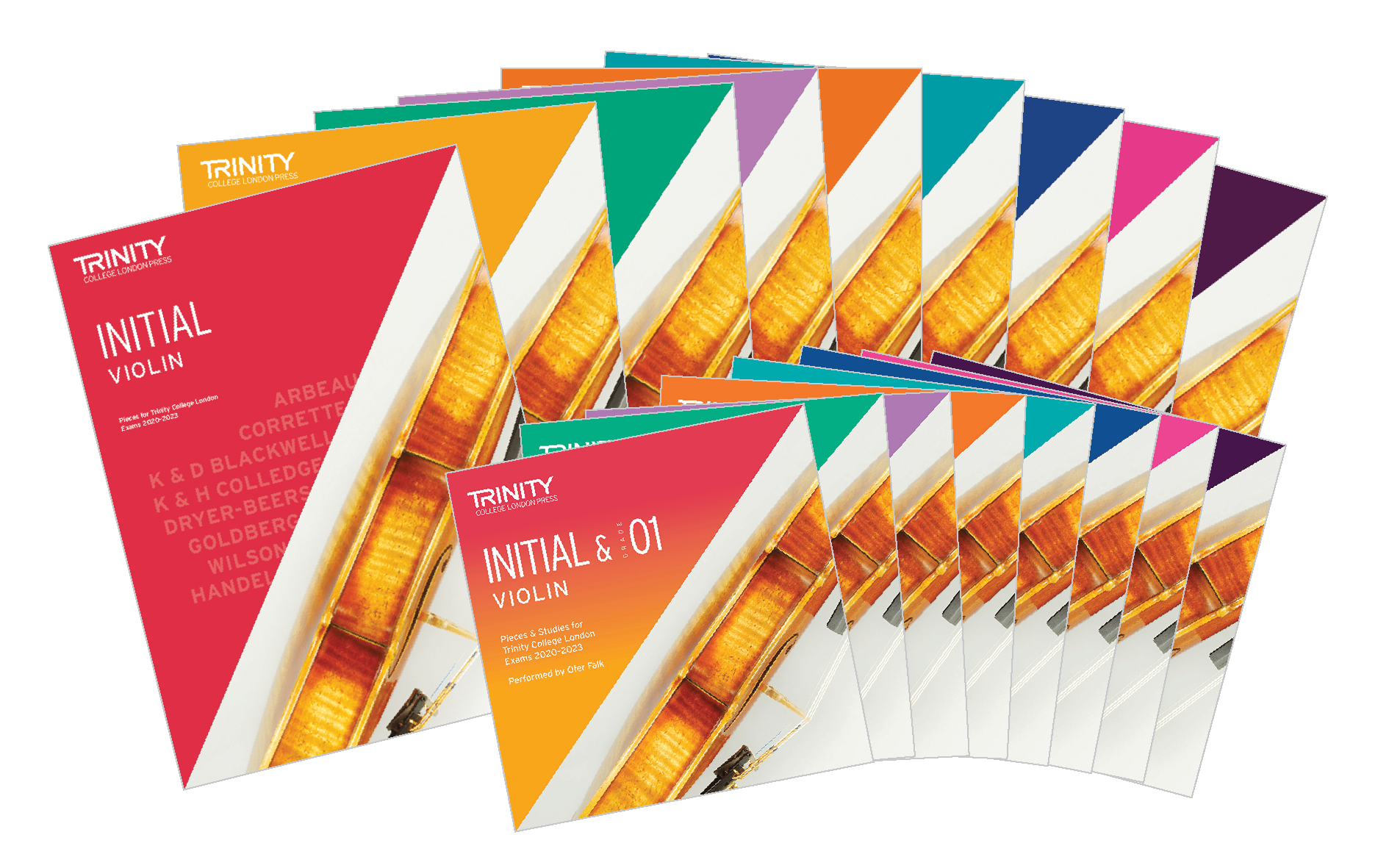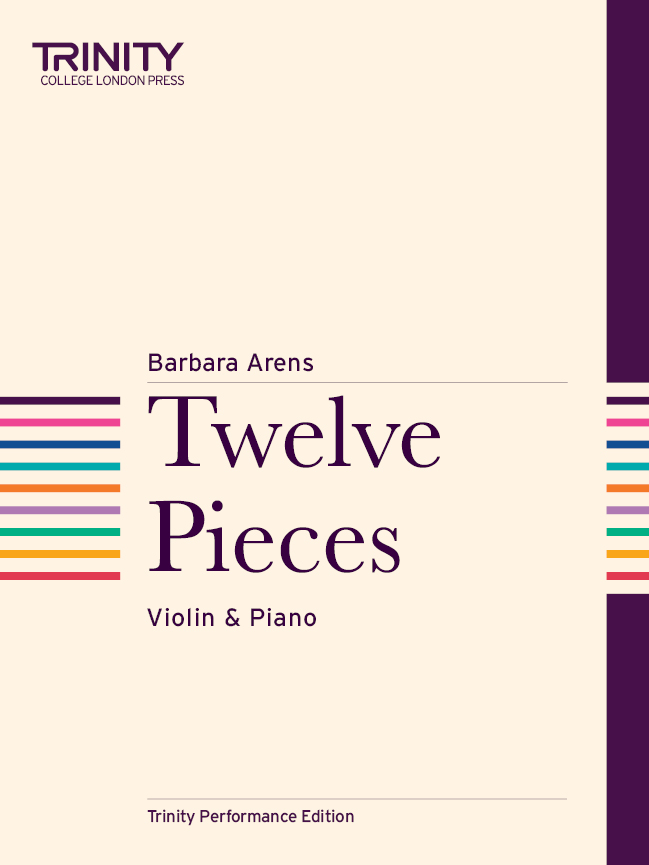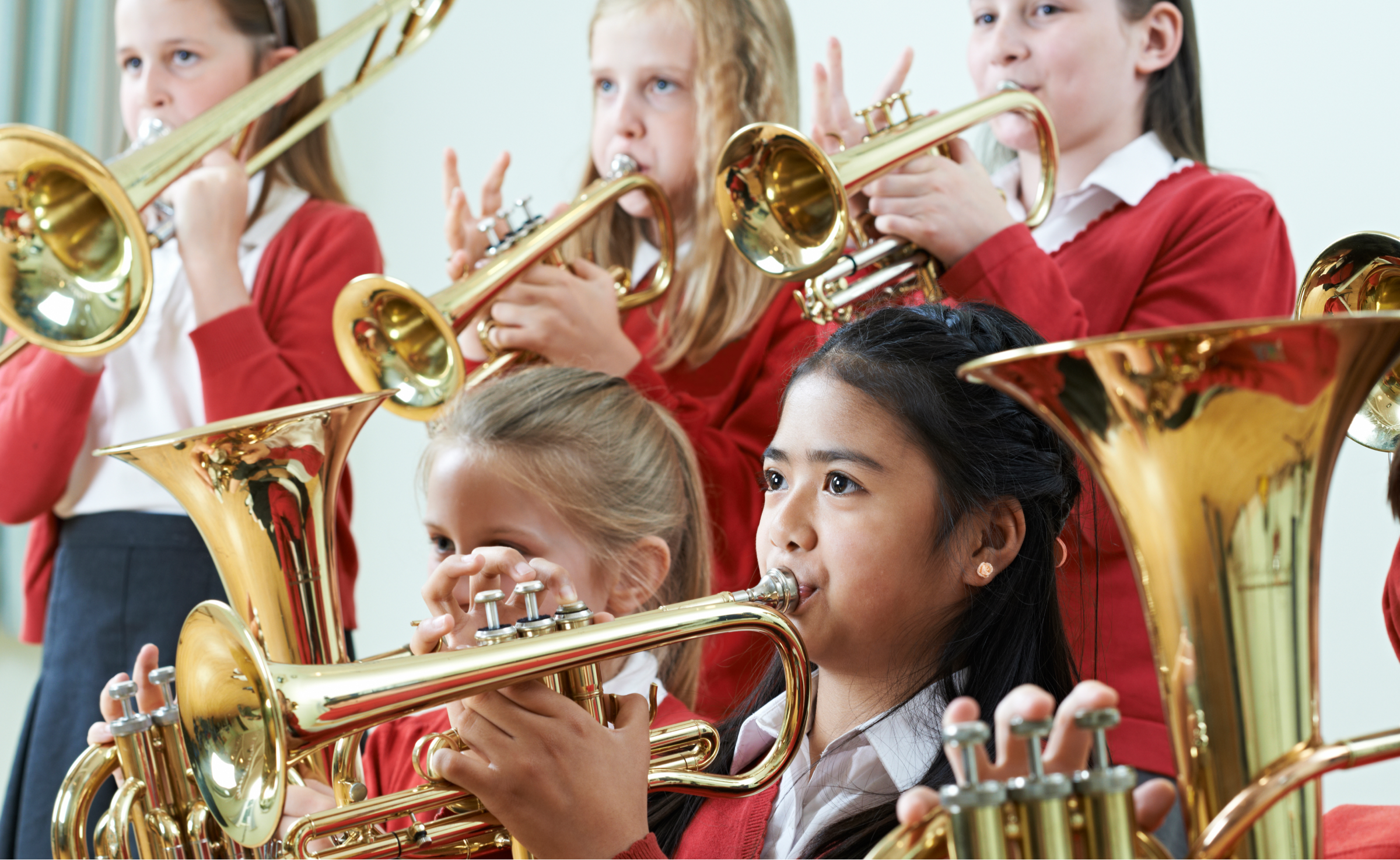Garry Wilkinson: Constellations Set I — performance notes
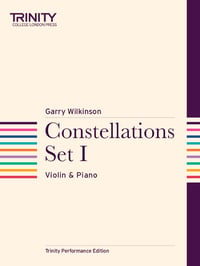
These 11 pieces for violin with piano accompaniment form set one of the music series, Constellations, inspired by the night sky. Other sets in the series include eight pieces for brass and piano (Set II), three of which are published by Trinity College London Press in the Trumpet, Cornet & Flugelhorn Exam Pieces 2019–2022 series.
Performance notes
1. Aquila — The Eagle
The music should soar like an eagle with clear, steady and well‑connected tones. Try to maintain even quality of tone on the first position, first-finger notes in bars 11 and 12 to match the open strings in all other bars.
The constellation Aquila is best seen during the northern‑hemisphere summertime. The bright star is named Altair. In Roman mythology, Aquila the Eagle carried the thunderbolts of the god, Zeus.
2. Capricornus — The Goat
A jaunty piece with lively rhythms, varied articulations and dynamics, bucking interval leaps and bowed and plucked (pizzicato) notes to convey the character of the goat constellation. There are a couple of bow retakes across rests. This is where two downbow strokes are used without an upbow note in between.
Capricornus is a zodiacal constellation commonly abbreviated to ‘Capricorn’. In mythology, the constellation represents a sea-goat, a horned goat with a fish tail. The Sun passes through the constellation in December and is best viewed in the northern hemisphere in late summer.
3. Lyra — The Harp
Aim for an even tone gently graded through the dynamics without emphasis on the first beat of each bar and well sustained in the separate bowing. The pizzicato (plucked) chords on open strings should be well separated, emulating the lyre, or harp.
Lyra is a northern-hemisphere constellation lying between Cygnus (the Swan) and Hercules. It represents the stringed, harp-like musical instrument invented by Hermes, the messenger of the Olympian Gods.
4. Dorado — The Goldfish
The trick here is the mixed metre, which represents the rippling waters. The violin time signature is simple triple time, whilst the piano plays in compound duple time, both kept together by matched tempi. In practising, count quavers or eighth notes; both players will then keep
to a tempo of 192 quaver beats per minute. The a piacere (‘at pleasure’) bars (Poco meno mosso section) should not be rushed. The tempo and pulse are very flexible here, but aim for a sense of progression through the rising phrases. Keep the mood calm and relaxed with no big splashes!
The Dorado constellation stretches to within just 20 degrees of the south celestial pole and so is not visible from most of the northern hemisphere of the Earth. Dorado is most famous for containing the Large Magellanic Cloud, which is not a cloud at all, but a companion galaxy to our own Milky Way.
5. Leo — The Lion
Crisp articulations and a clear, resonant tone in the double‑stopping are required along with buoyant rhythms in the melody. Look out for similar fingering patterns as the theme moves across the strings. You will have opportunity to incorporate the technical work you have learned including double-stopping and scales with single and double notes. Save a little extra forte for a big finish!
Leo is a large, bright constellation and one of the few that closely resembles the figure it represents. The head of the lion faces towards the west and the sun passes through the constellation during August and September each year making Leo a zodiacal constellation. Leo lies close to the celestial equator making it easy to observe from all locations. The bright star is Regulus.
6. Ursae — The Great Bear and the Little Bear
Keep a strong sense of pulse to underpin the rhythm. Try not to break or separate the three-note chords (from bar 25) — you may find heavy down bows closer to the fingerboard helpful. There are contrasting moods in this piece, but the tempo remains constant, so lighten the articulations and dynamics with a little lift of the bow in the staccato scales from bar 60, where the music represents the Little Bear, (Ursa Minor). The Tranquillo (calm) section should be played with a well-sustained tone. Play simply without swelling the phrases. Look out for the quiet ending and keep counting at the end as the piano does not play with the violin, and instead plays in the rests.
With popular names such as the ‘Saucepan’ or ‘Big Dipper’, Ursa Major (the Great Bear) is one of the most familiar constellations. It is large and bright, lying in the northern hemisphere and its two end stars of the ‘pan’ point to the most famous star of all, Polaris (the Pole Star), used for centuries by mariners to determine their latitude.
Polaris is the bright star in the constellation of Ursa Minor (the Little Bear) close to its parent in the night sky.
7. Indus — The Native American
Although the violin begins with an accompanying figure (the violin melody begins at bar 14), be assertive in the rhythmic pizzicato chords. These should be strummed alternately up then down while holding onto the bow. The melody from bar 25 is an original Native American folksong and can be well sustained in tone without crushing the grace notes to maintain a vocal quality. The melody is shared with the piano so do be aware of the ensemble. Build to a strong finish and take note that the final bar is slow, just like the opening.
Indus is a small, southern hemisphere constellation with no particularly bright stars, but it is perhaps appropriate that the archer, Sagittarius, is nearby holding the arrows!
8. Musca — The Fly
‘Scherzando’ is an indication of the joking character of the music, but the tempo is at your discretion. In judging this, consider not only the mood of the music but also the technical demands of the score. Aim for clarity and variety of articulation, including on the grace notes, and the many changes of arco and pizzicato. Take care not to play in the rests as this is an ensemble performance, and especially note that the main theme is not dotted in rhythm on the quavers (eighth notes), but includes rests. There is no ritenuto with the diminuendo at the close of the piece —
just throw away the ending.
Musca lies a long way south in the sky at the base of the Southern Cross; it is a mischievous little constellation that clearly bothers its celestial neighbour, Apus (the Bird of Paradise).
9. Apus — The Bird of Paradise
There is much opportunity for expression to capture the mood of this music representing the exotic bird of paradise, but the piece begins with a sense of bravura: a flourish of feathers! Come down in dynamic level in the sustained trills. The piano has interest here. Increase the tone in the scales, echoing the accompaniment. The main theme enters as late as bar 30, a relaxed tempo with a poised, dance-like quality. Do not be tempted to rush, especially as the music becomes busier in the cross-string, arpeggio figuration, which accompanies the melody in the piano. Although the piece bursts into life at the start, it fades away at the close. Ease off any vibrato here and you may wish to consider ending on a natural harmonic to add a personal touch to
the interpretation.
This constellation lies very close to the south celestial pole and is relatively faint. Ancient seafarers, far from home, gave familiar and exotic names to many of the southern star groups, which were later adopted by astronomers when cataloguing the 88 constellations.
10. Scorpius — The Scorpion
Unaccompanied, this solo piece for violin is testing of abilities to communicate fully the character of the music. Closely observe the many technical and expressive details of the score. This piece creeps up on the audience, crawling into existence. The tremolandos should be rapid, very close to the bridge and at the point of the bow. Play as quietly as you dare at the start. The enharmonics are spelled for the shifting tonal centres — watch out for the E-sharp to D-natural in bar 4, for example. The dance-like music bursts into life with a percussive, stabbing sting in bar 7. Try for a brisk tempo at which you can maintain reliable rhythm and articulate clearly in the semiquavers, allowing room for the accents and quick changes of arco and pizzicato (from bar 34). The pizzicato should resonate, and note that it is left-hand pizzicato at bar 48, switching back to right-hand pizzicato at bar 65. Save an extra dynamic for the closing climax and allow the final chord to ring.
Scorpius, a magnificent constellation, large in area and with bright stars closely resembling its figure, the Scorpion, straddles the celestial equator, making it an easy constellation to observe. The sun passes through this zodiacal constellation late in November and the ‘sting’ in its tail is marked by the bright star, ‘Shaula’. The red star, often mistaken for the planet Mars near the scorpion’s head is Antares, (in Greek, the name means ‘the rival of Mars’),
visible from mid‑northern latitudes to the south.
11. Perseus — The Greek Hero
The two principal themes of the piece are laid out in the slow introduction. Perseus’ theme is entirely accented, but aim more for clarity than weight in the articulation. Consider foreshortening the tied notes preceding the semiquavers for added rhythmic poise. Enter confidently and strongly, contrasting with the piano’s soft opening chord. Andromeda’s theme (see astronomical notes below) enters in bar 7, changing the mood to languid, restful reassurance. There is much ensemble interplay commencing with the Allegro vivace e energico. Consider the ensemble balance in your interpretation. There are passages of bravura, particularly in the scales, but keep a firm grasp of the pulse here without rushing. Look out for the three separate bows at the end of each semiquaver run, commencing at bar 35, giving them a marked articulation. A mysterious quality pervades the music at bar 74, which represents the evil eye of Medusa. Consider which techniques you may employ to communicate this mood. From bar 106 the music builds to the final climax. The double-stopping passage is all minor sixths on the E and A strings with interspersed open D string notes. The introductory music returns at the close, albeit transformed by the stabbing accompanying chords from the Allegro, ending defiantly.
The bright, northern constellation of Perseus, best viewed in the northern hemisphere between August and March, trails southward from the ‘W’ figure of Cassiopeia and lies next to Andromeda in the night sky. The constellation includes the variable star, Algol, brightening and darkening over a period of almost three days. In Greek mythology, Perseus, son of Zeus, slayed the Gorgon Medusa (the winking evil eye of the star, Algol), and rescued Andromeda from the sea monster.
Performance notes by Garry Wilkinson



